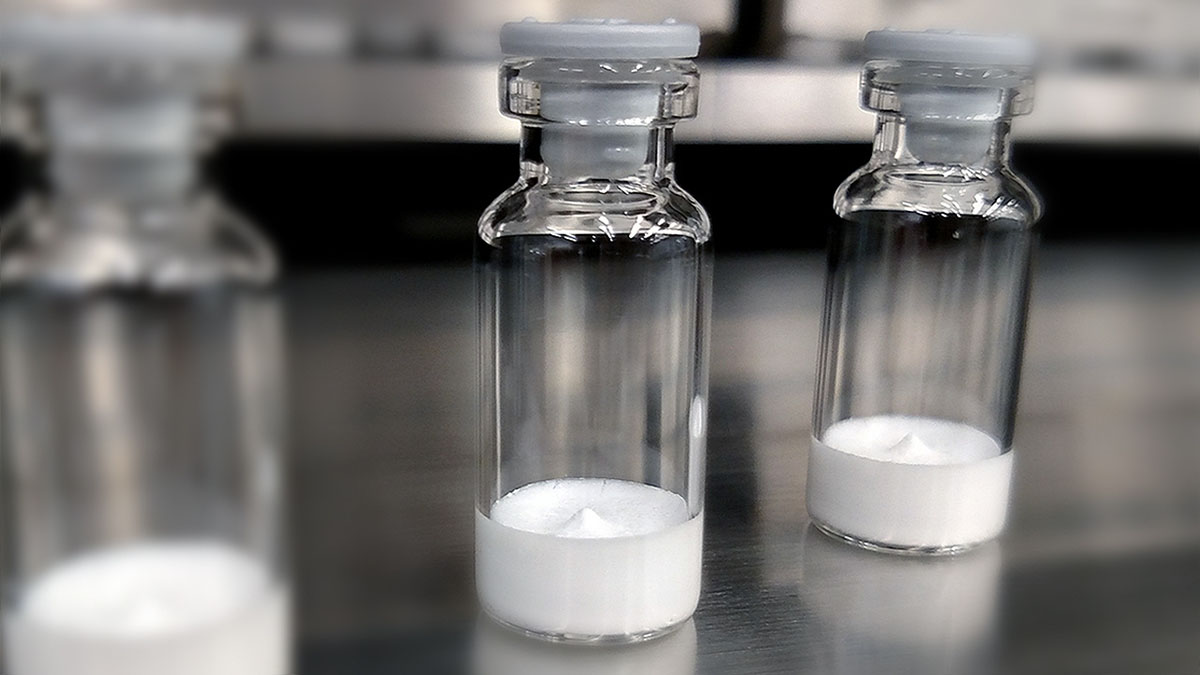Understanding Lyophilized Peptides

Understanding Lyophilized Peptides, What They Are and How They’re Made:
Peptides are small chains of amino acids that play vital roles in many biological functions. When it comes to storing and using peptides, one method stands out: lyophilization, commonly known as freeze-drying. This process helps preserve peptides and make them more stable for storage and use. In this blog, we’ll explore what lyophilized peptides are, the freeze-drying process, and their applications in medicine and wellness—all in an easy-to-understand way.
What Are Lyophilized Peptides?
Lyophilized peptides are peptides that have undergone a freeze-drying process to remove their water content. This process transforms the peptides into a dry powder form, making them easier to store and transport. Lyophilization helps maintain the integrity and potency of the peptides, preserving their biological activity for longer periods.
When peptides are lyophilized, they can be reconstituted later by adding a suitable solvent, usually sterile water, to return them to a liquid form for use. This method is particularly useful because peptides can be sensitive to heat and moisture, which could degrade their quality.
The Freeze-Drying Process:
The process of lyophilization involves several key steps:
1. **Preparation**: Initially, the peptide solution is prepared, which may involve mixing the peptides with a suitable buffer or stabilizing agent. This helps ensure that the peptides remain stable during the freeze-drying process.
2. **Freezing**: The prepared solution is then frozen at very low temperatures, typically between -40°C to -80°C. This step is crucial as it solidifies the water in the solution into ice.
3. **Primary Drying (Sublimation)**: Once frozen, the pressure in the freeze-dryer is lowered, and heat is applied gently. This causes the ice to sublimate, meaning it turns directly from a solid into vapor without becoming liquid. During this phase, most of the water is removed, leaving behind a dry peptide powder.
4. **Secondary Drying (Desorption)**: After the primary drying phase, there may still be some residual moisture within the peptide powder. In the secondary drying phase, the temperature is increased slightly, and the pressure remains low to help remove any remaining water molecules. This step ensures that the final product has minimal moisture content, which is essential for stability.
5. **Sealing**: Once the lyophilization process is complete, the lyophilized peptides are sealed in airtight containers to protect them from moisture and light. This helps preserve their quality during storage.
Why Use Lyophilized Peptides?
Lyophilization offers several advantages when it comes to storing peptides:
1. **Stability**: Lyophilized peptides are highly stable and can be stored at room temperature for extended periods without losing potency. This stability is crucial for pharmaceutical applications, where maintaining the effectiveness of a drug is essential.
2. **Ease of Transport**: The dry form of peptides is lightweight and less bulky than liquid forms, making them easier to transport. This is particularly important for shipping peptides over long distances.
3. **Long Shelf Life**: Because moisture is removed during lyophilization, the risk of microbial growth is minimized. This results in a longer shelf life for the peptides, allowing for more flexible storage options.
4. **Convenience**: Reconstituting lyophilized peptides is straightforward. Users can easily mix the powder with a suitable solvent before administration or experimentation.
Applications of Lyophilized Peptides:
Lyophilized peptides are used in various fields, including:
1. **Pharmaceuticals**: Many peptide-based drugs, such as hormones and therapeutic agents, are lyophilized for stability and ease of storage. This includes medications for diabetes (like insulin), growth hormone therapies, and peptide-based cancer treatments.
2. **Research**: In laboratories, researchers often use lyophilized peptides in experiments. The stable form allows them to accurately measure and test the peptides without worrying about degradation.
3. **Cosmetics**: Lyophilized peptides are also used in the cosmetic industry, particularly in anti-aging products. They can be reconstituted and added to creams or serums to enhance skin health.
4. **Nutritional Supplements**: Some dietary supplements contain lyophilized peptides derived from proteins. These supplements can support muscle growth, recovery, and overall wellness.
5. **Veterinary Medicine**: In veterinary applications, lyophilized peptides are used for various treatments and therapies in animals, ensuring they receive effective medications.
Conclusion:
Lyophilized peptides play a crucial role in numerous applications, from pharmaceuticals to research and cosmetics. The lyophilization process preserves their potency and stability, making them easier to store and transport. Understanding how lyophilized peptides are made and their benefits can help you appreciate their importance in health, medicine, and wellness.
Whether you’re a researcher, a healthcare professional, or simply curious about the science behind peptides, knowing about lyophilized peptides opens the door to understanding how these small chains of amino acids can have a big impact on our lives. With ongoing research and development, the potential applications of lyophilized peptides continue to expand, promising exciting advancements in various fields.
Powered by Lightspeed
Display prices in:USD
